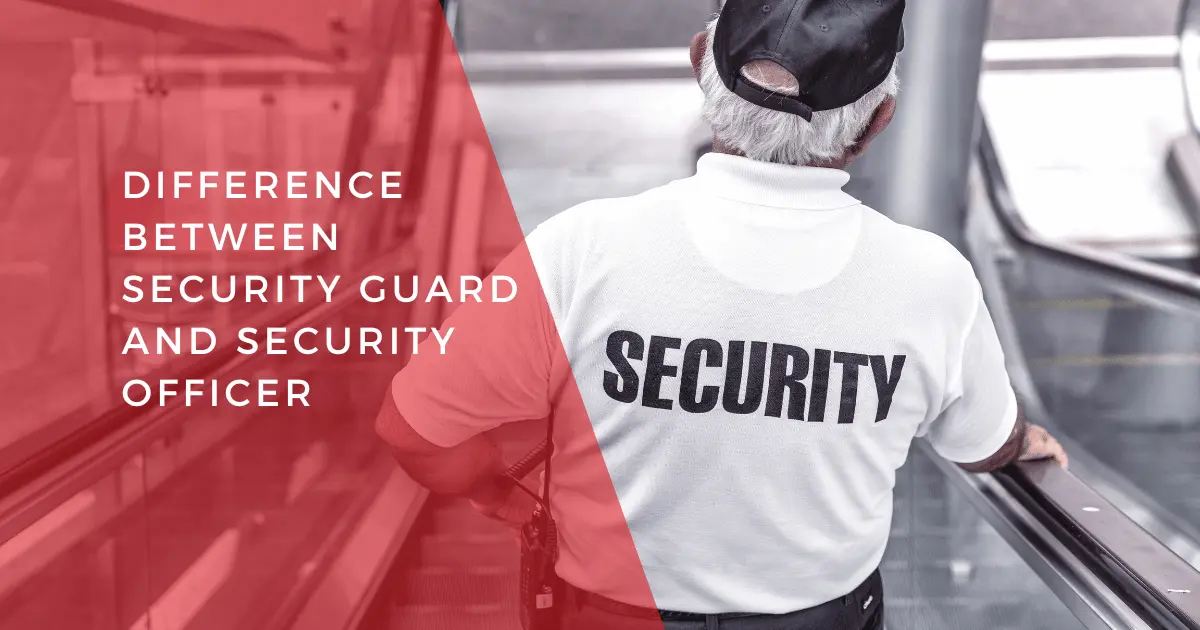What is the difference between security guard & security Officer?
As someone who is deeply involved in the security industry for decades, I’ve often noticed that the terms “security guard” and “security officer” are used interchangeably by my clients, which can lead to misunderstandings. While both roles help us in maintaining safety, they differ significantly in terms of responsibilities, authority, and required skill sets.
What is a Security Guard?
I don’t know about others but in my company, a security guard’s primary focus is on immediate, on-the-ground tasks. This can include patrolling designated areas, monitoring surveillance equipment, and responding promptly to incidents.
Their duties are often routine and conducted under direct supervision. For example, in shopping malls, security guards should monitor entrances and prevent theft, while at events, they can handle ticket checking and crowd control.
What is a Security Officer?
On the other hand, a security officer holds a more authoritative position. According to my experience, I ensure that they are responsible for planning and coordinating comprehensive security measures, leading teams of security personnel, and managing high-risk situations.
Their role often involves strategic planning, risk assessment, and decision-making to ensure overall safety. For example, in corporate settings, security officers oversee building access, manage security systems, and coordinate emergency responses.
What are the Key Differences?
Authority Level
- Security Guard: Operates with limited authority, focusing on monitoring and maintaining order.
- Security Officer: Holds higher authority, including managing security operations and making critical decisions.
Job Hierarchy and Reporting Structure
- Security Guard: Reports to security officers and follows established protocols.
- Security Officer: Reports to higher management and is responsible for developing and implementing security strategies.
Skills and Training
- Security Guard: Receives basic training in security protocols and emergency response.
- Security Officer: Undergoes advanced training in leadership, risk management, and strategic security planning.
Responsibilities and Duties Comparison
|
Aspect |
Security Guard |
Security Officer |
|---|---|---|
|
Primary Focus |
Surveillance and patrolling |
Oversight and strategy |
|
Authority Level |
Basic |
Higher (Supervisory role) |
|
Common Environments |
Public spaces, events |
Large facilities, corporate settings |
|
Interaction with Clients |
Minimal |
Frequent and detailed |
Skills and Training Requirements
Security Guard Training
- First Aid Training: Essential for handling minor injuries or medical emergencies until professional help arrives.
- Communication Skills: Ability to clearly convey information to the public and report incidents accurately.
- Security Protocols: Understanding of basic security systems, patrol procedures, and access control measures.
Security Officer Training
- Leadership Skills: Competence in managing teams and overseeing security operations.
- Risk Management: Proficiency in identifying potential threats and implementing preventive measures.
- Use of Technology: Familiarity with advanced surveillance systems, alarm monitoring, and other security technologies.
- Emergency Response Planning: Capability to develop and execute plans during critical situations.
When Should You Hire a Security Guard vs. a Security Officer?
Security Guard
- Scale: Suitable for smaller-scale security needs where basic monitoring is sufficient.
- Occasions and Events: Ideal for entry ticket verification and crowd management at public events.
- Malls and Residential Areas: Effective for general safety, entry monitoring, and routine patrols.
Security Officer
- Scale: Necessary for large-scale operations requiring complex security management.
- High-Risk Locations: Essential for assessing risks and creating tailored security plans in vulnerable areas.
- Large Events: Preferable for high-profile events demanding comprehensive safety strategies.
Conclusion
Understanding the distinction between security guards and security officers is crucial for deploying the appropriate level of protection. Security guards are vital for tasks like monitoring, patrolling, and providing services at public events, operating with limited authority. In contrast, security officers handle more complex responsibilities, including managing security teams, developing strategic plans, and responding to emergencies, typically in corporate or high-risk environments. Recognizing these differences ensures optimal protection for businesses and individuals.
Frequently Asked Questions
Is a security officer higher than a security guard?
Yes, a security officer holds a higher position with more authority and responsibilities compared to a security guard.
Do security officers carry weapons?
The arming of security officers depends on the job requirements and location. Some security officers carry weapons, while others do not, similar to security guards.
Can a security guard become a security officer?
Yes, with additional training, experience, and certifications, a security guard can be promoted to a security officer position.
What qualifications are needed to be a security officer?
Security officers typically require advanced training in risk management, leadership, and emergency response, along with relevant certifications.
Are security guards and officers the same?
No, they have different levels of authority, responsibilities, and roles within the security framework.
What is the role of a security officer?
A security officer manages security operations, oversees security teams, and develops strategic security plans.
How do security guards and officers differ in training?
Security officers receive advanced training in leadership, risk management, and security planning, while security guards receive basic training in surveillance and emergency response.
By understanding these distinctions, we can ensure that the right security personnel are assigned to the appropriate roles, enhancing overall safety and protection.

